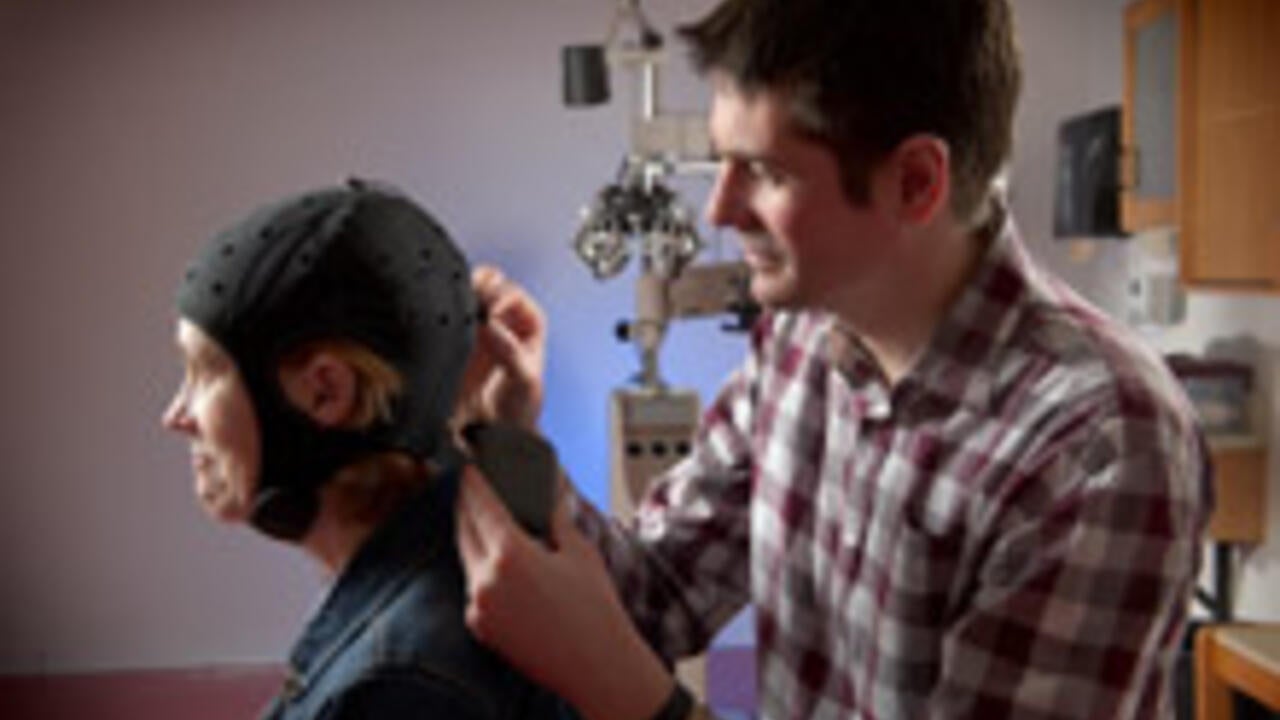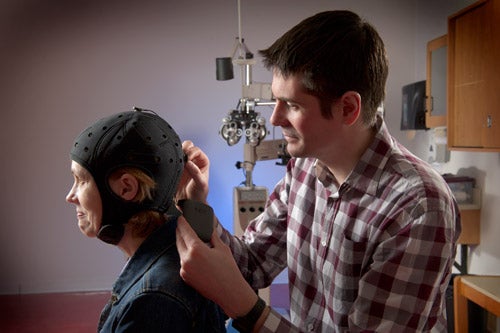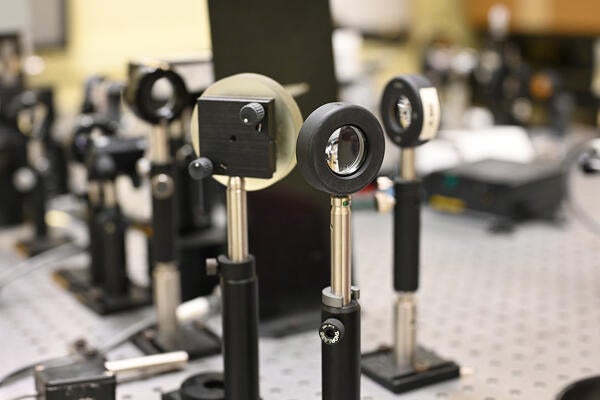
Mild electrical stimulation of the brain could help treat lazy eye
Waterloo researcher finds twenty minutes of low-voltage electric currents can temporarily improve sight for adults with lazy eye

Waterloo researcher finds twenty minutes of low-voltage electric currents can temporarily improve sight for adults with lazy eye
By Victoria Van Cappellen Faculty of ScienceLazy eye, a condition that causes visual impairment and increases a person’s risk of blindness, has long been thought to be untreatable for adults. But now a Waterloo vision scientist has discovered that low-voltage electric currents to the brain can temporarily improve sight for people with lazy eye.
It’s a long held view that adults can’t be treated for lazy eye because their brains no longer have the capacity to change,” says Ben Thompson, a professor in the School of Optometry and Vision Science in the Faculty of Science. “We demonstrate here that adults do have the capacity, especially when it comes to vision.”
Thompson, along with collaborators from Sun Yat-sen University in China, published the findings recently in Scientific Reports, a highly cited Nature publication.

Lazy eye, also known as amblyopia, is a loss of vision that originates in the brain, typically when a child develops an eye turn or when one eye becomes long sighted. The unequal input causes the brain to process information from the weaker eye incorrectly. And unless the brain processing issue is treated, the vision loss remains, even after the problems in the eye are fixed. It affects up to three per cent of Canadians and with no treatment options for adults, it increases a patient’s lifetime risk for legal blindness by 50 per cent.
Until now, only young children were considered successful candidates for treatment, which often involved wearing a simple eye patch. “Amblyopia is an issue here in Canada, but much more so in countries where access to basic vision care for children is challenging,” says Thompson.
That said, amblyopia in children is very treatable because their brains are so responsive. It’s a different story for adults whose brains have long passed out of the critical developmental period.
“Until fairly recently, the prevailing view was that if adults couldn’t develop amblyopia, they couldn’t be treated for it,” says Thompson. “This was the same for anyone with brain-based vision problems – they’re often told there’s nothing that can be done about their vision loss.”
That’s where transcranial direct current stimulation or tDCS can help. It appears these low voltages – often described as a slight tingling on the head – stimulate activity in certain areas of the brain, depending on how and where stimulation is applied.
Methods such as tDCS are nothing new, but are now undergoing something of a revival. Recent studies are finding low voltage stimulation can alleviate depression, improve adult learning and increase neuroplasticity – the brain’s ability to rewire and reorganise itself. In a proof-of-concept series of experiments, Thompson and his colleagues exposed patients to twenty minutes of tDCS, applied to the surface of the head, directly over the primary visual cortex.
They found the treatment temporarily increased the brain’s response to visual information from the lazy eye as well as the patients’ ability to see low contrast patterns.
Other research groups have suggested that tDCS might also have beneficial effects in patients with vision loss due to stroke.
Thompson says these initial results demonstrate the proof-of-concept that will allow him and his research group to take the next step towards clinical trials.
“Our ultimate goal is to develop an evidence-based treatment that patients can receive right in their eye doctor’s office,” says Thompson. “We expect there are other primary visual cortex problems that we may be able to address with this method.”
Other collaborators include researchers from McGill University, University of Auckland and Hong Kong Polytechnic University.

Read more
Waterloo co-op students earn opportunity to contribute to SickKids research

Read more
Non-invasive and accessible testing can detect symptoms of Alzheimer’s disease long before symptoms occur

Read more
Waterloo researcher discovers that more harm reduction treatments are needed to eliminate Hep C by 2030
The University of Waterloo acknowledges that much of our work takes place on the traditional territory of the Neutral, Anishinaabeg and Haudenosaunee peoples. Our main campus is situated on the Haldimand Tract, the land granted to the Six Nations that includes six miles on each side of the Grand River. Our active work toward reconciliation takes place across our campuses through research, learning, teaching, and community building, and is co-ordinated within the Office of Indigenous Relations.